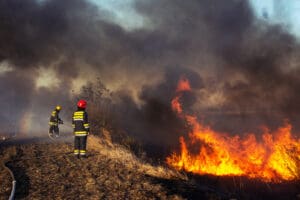Southern Oregon is blessed with natural beauty, diverse ecosystems, and a rich cultural heritage. However, the region faces numerous challenges threatening its sustainability and resilience, particularly water scarcity and wildfire risk. As climate change intensifies these challenges, community leaders in Southern Oregon are taking proactive steps to tackle them head-on. One land use strategy involves developing and implementing effective regulations to prioritize water conservation and wildfire risk reduction. Don’t let these regulations surprise you if you are remodeling or constructing a new home or business.
 Water Conservation
Water Conservation
Water scarcity is a critical challenge facing Southern Oregon, and its impact is felt across the region due to factors such as population growth, agricultural practices, and climate change. Addressing this issue requires a multifaceted approach that involves various stakeholders, including homeowners, businesses, and local governments. Regulations or codes enacted to encourage water conservation could impact your construction project.
Land use regulations in Southern Oregon focus on water conservation in several ways. One way is through zoning laws, which restrict the type of development that can occur in certain areas. For example, some areas may be zoned for residential use only, while others may be zoned for commercial or industrial use. This helps ensure that development does not occur in areas sensitive to water resources.
Local governments have established building codes to balance the needs of consumers and businesses with our limited water supply. Building codes often require new construction to meet specific standards for water efficiency. For example, new homes may be required to have low-flow toilets and faucets. This helps to reduce the amount of water that is used in homes.
Land use regulations also manage water conservation through the permitting process. When a developer wants to build a new project, they must obtain a permit from the local government. The permit process includes an environmental review, which assesses the project’s impact on water resources. This helps to ensure that new development does not hurt water supplies.
Wildfire Risk
Southern Oregon has several forests and grasslands, making it highly susceptible to wildfires, especially during the dry summer months. The threat of wildfire risk goes hand in hand with water scarcity since less precipitation results in a greater fire risk. As such, community leaders and stakeholders are taking proactive steps to reduce the risk of wildfires, often through land use regulations and building regulations that jointly address water conservation and wildfire risk reduction.
For example, Senate Bill (SB) 762 (2021) created a statewide approach to various wildfire mitigation measures. The legislature directed the Building Codes Division to adopt fire-hardening building code standards based on existing wildfire mitigation provisions that could be applied to areas of the state mapped as extreme or high risk and in the wildland-urban interface. You can learn more about these building codes on the State of Oregon website.
Before you purchase a property to develop it, you should fully understand all the rules and restrictions governing the parcel. Zoning regulations may limit development in high-risk areas, and building codes can require fire-resistant designs for new buildings. For example, using fire-resistant materials like concrete or metal for roofs, walls, and decks can significantly reduce the risk of wildfire damage. Moreover, land conservation can also mitigate wildfire risks by reducing the amount of flammable vegetation and protecting critical watersheds that provide a source of firefighting water.
We’re here to make understanding land use regulations easy.
It can seem impossible to navigate all the land use regulations impacting property owners in Southern Oregon. Richard Stevens & Associates will help you understand all the rules that will apply to your land purchase or potential project, including land use regulations designed to enhance water conservation and wildfire risk reduction efforts. Contact us today for more information.

 Water Conservation
Water Conservation